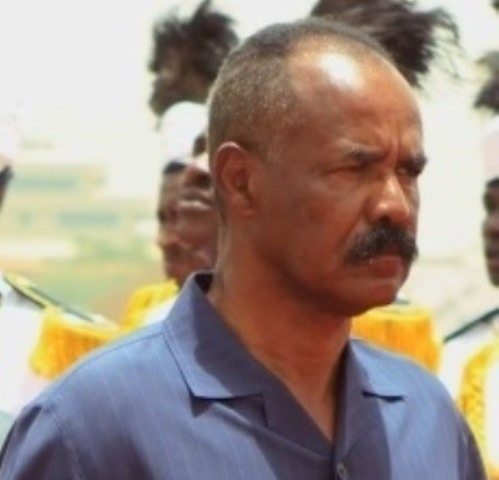Last month, the Washington Post reported that:
‘the Obama administration is assembling a constellation of secret drone bases for counterterrorism operations in the Horn of Africa and the Arabian Peninsula as part of a newly aggressive campaign to attack al-Qaeda affiliates in Somalia and Yemen, U.S. officials said. One of the installations is being established in Ethiopia, a U.S. ally in the fight against al-Shabab, the Somali militant group that controls much of that country. Another base is in the Seychelles, an archipelago in the Indian Ocean, where a small fleet of “hunter-killer” drones resumed operations this month after an experimental mission demonstrated that the unmanned aircraft could effectively patrol Somalia from there.’
Elaborating on the alleged drone bases in Ethiopia, Washington Post stated:
One U.S. official said that there had been discussions about putting a drone base in Ethiopia for as long as four years, but that plan was delayed because “the Ethiopians were not all that jazzed.” Other officials said Ethiopia has become a valued counterterrorism partner because of threats posed by al-Shabab.
“We have a lot of interesting cooperation and arrangements with the Ethiopians when it comes to intelligence collection and linguistic capabilities,” said a former senior U.S. military official familiar with special operations missions in the region.
An Ethiopian Embassy spokesman in Washington could not be reached for comment Tuesday night.
The former official said the United States relies on Ethiopian linguists to translate signals intercepts gathered by U.S. agencies monitoring calls and e-mails of al-Shabab members. The CIA and other agencies also employ Ethiopian informants who gather information from across the border.
Ethiopian officials categorically denied the report saying that ‘we don’t entertain foreign military bases in Ethiopia’.
However, US officials are affirming the news indicating that ‘the Ethiopian base became operational this year’, Washington Post reported a few hours ago. It reported:
The Air Force confirmed Thursday that drone operations are underway at the Arba Minch airport. Master Sgt. James Fisher, a spokesman for the 17th Air Force, which oversees operations in Africa, said that an unspecified number of Air Force personnel are working at the Ethiopian airfield “to provide operation and technical support for our security assistance programs.”
The Arba Minch airport expansion is still in progress but the Air Force deployed the Reapers there earlier this year, Fisher said. He said the drone flights “will continue as long as the government of Ethiopia welcomes our cooperation on these varied security programs.”
According to the news:
The Air Force has invested millions of dollars to upgrade an airfield in Arba Minch, Ethiopia, where it has built a small annex to house a fleet of drones that can be equipped with Hellfire missiles and satellite-guided bombs. The Reapers began flying missions earlier this year over neighboring Somalia, where the United States and its allies in the region have been targeting al-Shabab, a militant Islamist group connected to al-Qaeda.
U.S. military personnel and contractors have become increasingly visible in recent months in Arba Minch, a city of about 70,000 people in southern Ethiopia. Arba Minch means “40 springs” in Amharic, the national language.
Travelers who have passed through the Arba Minch airport on the occasional civilian flights that land there said the U.S. military has erected a small compound on the tarmac, next to the terminal.
The compound is about half an acre in size and is surrounded by high fences, security screens and lights on extended poles. The U.S. military personnel and contractors eat at a cafe in the passenger terminal, where they are served American-style food, according to travelers who have been there.
The Reaper drone (or unmanned air vehicle – UAV) is described by the US Air force website as follows:
Mission
The MQ-9 Reaper is a medium-to-high altitude, long endurance unmanned aircraft system. The Reaper’s primary missions are close air support, air interdiction, and intelligence, surveillance and reconnaissance, or ISR. It acts as a Joint Forces Air Component Commander-owned theater asset for reconnaissance, surveillance and target acquisition in support of the Joint Forces Commander.
Features
The MQ-9 is a system, not just an aircraft. A fully operational system consists of several air vehicles (with sensors and weapons), a ground control station, or GCS, a Predator Primary Satellite Link, or PPSL, and spare equipment along with operations and maintenance crews for deployed locations.
The basic crew consists of a rated pilot to control the aircraft and command the mission and an enlisted aircrew member to operate sensors and weapons plus a mission coordinator, when required. To meet combatant commanders’ requirements, the Reaper delivers tailored capabilities using mission kits that may contain various weapons and sensor payload combinations.
The MQ-9 baseline system carries the Multi-spectral Targeting System, or MTS-B, which has a robust suite of sensors for targeting. The MTS-B integrates an infrared sensor, a color/ monochrome daylight TV camera, an image-intensified TV camera, a laser designator and a laser illuminator into a single package. The full motion video from each of the imaging sensors can be viewed as separate video streams or fused together.
The unit also incorporates a laser rangefinder/designator which provides the capability to precisely designate targets for laser-guided munitions; such as the GBU-12 Paveway II. The Reaper is also equipped with a synthetic aperture radar to enable GBU-38 Joint Direct Attack Munitions targeting. The MQ-9B can also employ four laser-guided AGM-114 Hellfire missiles which possess a highly accurate, low collateral damage, anti-armor and anti-personnel engagement capability.
Each MQ-9 aircraft system can be disassembled and loaded into a single container for deployment worldwide. The entire system can be transported in the C-130 Hercules or larger aircraft. The MQ-9 aircraft operates from standard U.S. airfields with clear line-of-sight to the ground data terminal antenna which provides line-of-sight communications for takeoff and landing. The PPSL provides over-the-horizon communications for the aircraft and sensors.
An alternate method of employment, Remote Split Operations, employs a GCS for takeoff and landing operations at the forward operating location, while the CONUS-based crew executes the mission via beyond-line-of-sight links.
Background
The U.S. Air Force proposed the MQ-9 system in response to the Department of Defense request for Global War on Terrorism initiatives. It is larger and more powerful than the MQ-1 Predator and is designed to go after time-sensitive targets with persistence and precision, and destroy or disable those targets. The "M" is the Department of Defense designation for multi-role and "Q" means unmanned aircraft system. The "9" indicates it is the ninth in the series of remotely piloted aircraft systems.
The MQ-9 is operated by the 17th Reconnaissance Squadron and the 42nd Attack Squadron, both at Creech Air Force Base, Nev., and the 29th Attack Squadron at Holloman AFB, N.M.General Characteristics
Primary Function: Unmanned hunter/killer weapon system
Contractor: General Atomics Aeronautical Systems, Inc.
Power Plant: Honeywell TPE331-10GD turboprop engine
Thrust: 900 shaft horsepower maximum
Wingspan: 66 feet (20.1 meters)
Length: 36 feet (11 meters)
Height: 12.5 feet (3.8 meters)
Weight: 4,900 pounds (2,223 kilograms) empty
Maximum takeoff weight: 10,500 pounds (4,760 kilograms)
Fuel Capacity: 4,000 pounds (602 gallons)
Payload: 3,750 pounds (1,701 kilograms)
Speed: Cruise speed around 230 miles per hour (200 knots)
Range: 1,150 miles (1,000 nautical miles)
Ceiling: Up to 50,000 feet (15,240 meters)
Armament: Combination of AGM-114 Hellfire missiles, GBU-12 Paveway II and GBU-38 Joint Direct Attack Munitions
Crew (remote): Two (pilot and sensor operator)
Unit Cost: $53.5 million (includes four aircraft with sensors) (fiscal 2006 dollars)
Initial operating capability: October 2007
Inventory: Active force, 47; ANG, 1; Reserve, 0
*****************
[Update will be provided if and when the Ethiopian government comments on the matter. Stay Tuned]
Related:






2 Reactions on this Article
Comments are closed.
Leave a Comment